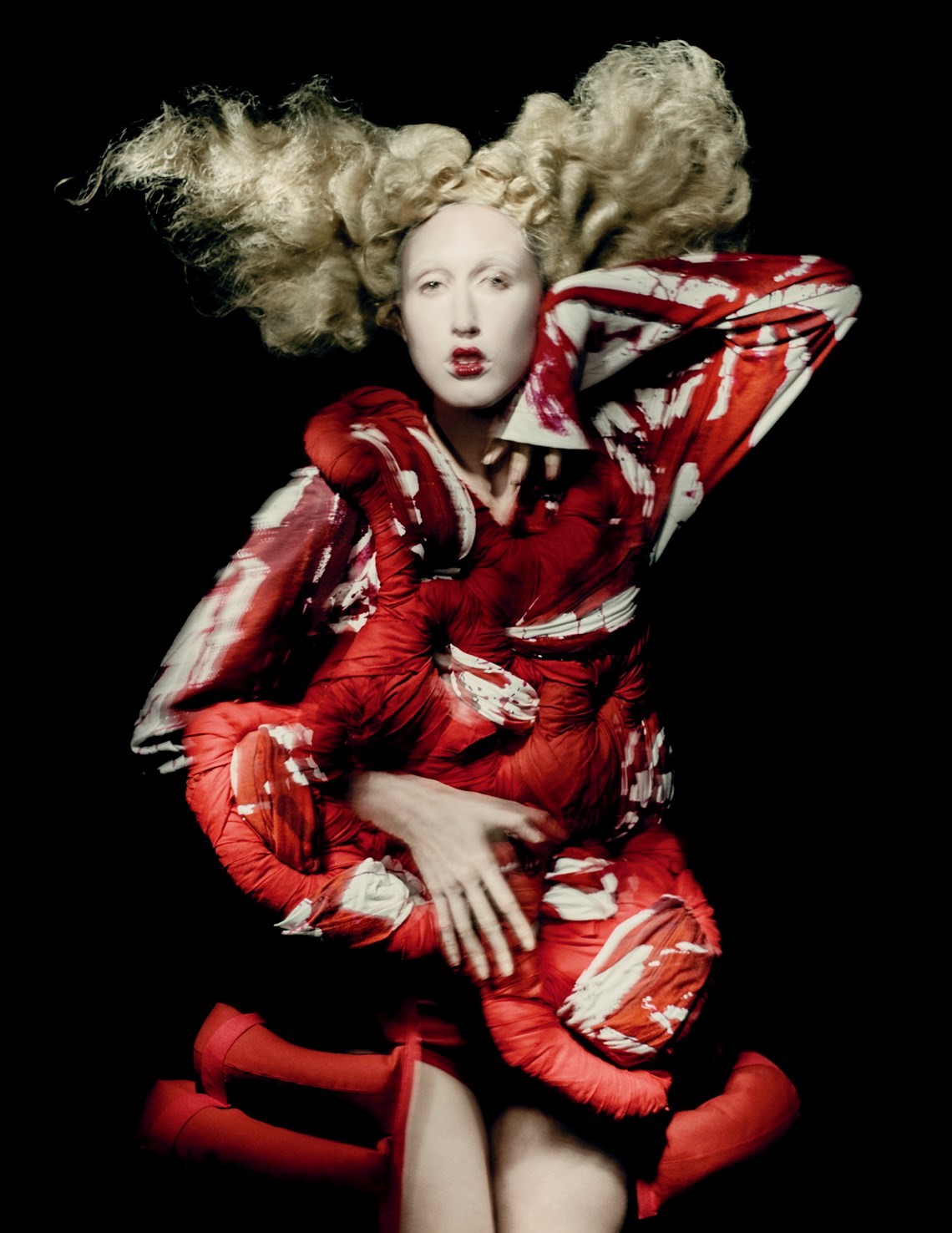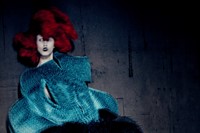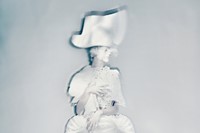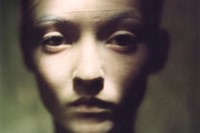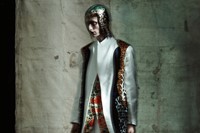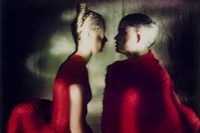There is no more gracious greeting to the new Dover Street Market in Paris than the larger-than-life installations of photographer Paolo Roversi’s images for Comme des Garçons – printed on curved wooden structures designed by Rei Kawakubo – which preside sagely over the courtyard of the former 16th century hotel particulier. For the respect, trust, and absolute commitment to unbridled creativity that underpins Roversi and Kawakubo’s relationship is also what is implicit to the new space. In the words of the photographer, Dover Street Market Paris is “a love story for ideas. A love story for dreams.”
Although the space has been occupied by Dover Street for four years now, plans to open a retail space were put on hold by the onset of the Covid-19 pandemic. In the interim, the former hotel particulier of Madame de Sevigné (a French literary giant and revolutionary feminist) has hosted various cultural happenings such as fashion shows, exhibitions, and pop-up cafés – a programme that Dover Street Market and Comme des Garçons’ President Adrian Joffe explains was intended “to make the building known” before the opening of the shop. But surreptitiously, it has also laid the foundations for the space’s guiding ethos of “no borders”: within the retail maze, designed by Kawakubo herself, various languages of art are placed in organic dialogue, without hierarchy or distinction.
Ahead of the opening of Dover Street Market Paris, we sat down with Adrian Joffe, Carla Sozzani, who works alongside Joffe on both retail and cultural programming, and Paolo Roversi in one of the building’s dedicated exhibition spaces. Under the soft gaze of Roversi’s photographs, a tender and teary conversation unfolded, tracing the intimate and emotional overlaps of their three lives – their relationship with Rei Kawakubo, remembering Franca Sozzani, and shared dreams for Dover Street to be an artistic universe ‘without borders.’
Adrian Joffe: Dover Street Market Paris has been in the works for quite a long time. We found the building four years ago and wanted to open one year later – but then Covid happened. It was not a good time to open a shop but, because we had the building, we decided to do a ‘cultural centre’, although I don’t like those words very much. I thought it was a good idea to make known the building for when we eventually opened.
The space upstairs is going to be the shop. The walls of the building we didn’t touch. It’s just things coming into the space. And in the space in-between, we're going to have exhibitions.
Carla Sozzani: Madame de Sevigné used to live here. So historically, it’s a very important building.
AJ: That’s a very important point. Rei created the whole architecture and the design, but she didn’t want to touch the building. She thinks it’s the perfect building. She loves the shapes and the aura of the building; she didn’t want to interfere with it at all. She likes to keep it authentic and respect the history.
CS: Yes, all that changed was inside. It’s a beautiful design.
AJ: Madame de Sevigné was quite revolutionary, wasn’t she? They say she was the first feminist of France.
“Rei created the whole architecture and the design, but she didn’t want to touch the building. She thinks it’s the perfect building. She loves the shapes and the aura of the building; she didn’t want to interfere with it at all” – Adrian Joffe
CS: Yes, exactly. There is nothing like this space in Paris. It’s a destination where you can experience a universe, through all your feelings. There is the store where you can discover something new, something you’ve never seen before. And then there is the exhibition space. And a café, of course. It’s a place that doesn’t exist.
Paolo Roversi: I agree. It’s as you said before, it’s a little world. A new little world.
CS: You close the door, and you enter into another world. A world which is dependent on free thinking.
AJ: This space is going to be different to the others, however, because no brand will have their own space. Rei designed the whole space but it has the same DNA, the same spirit of discovery as the other Dover Streets. The same balance and mix up of men’s and women’s, cheap and expensive. And something in the middle. But now we have a bigger ‘middle’ – more creative independent people. A little bit less luxury and a little bit less street. We want to go more into that – the end of the borders and categorisation. It is all one. No more borders. Plus de frontières.
CS: It is really going to be the place where we can open more and more to young talent – it could be photography, it could be illustration, it could be music. Performances would make a lot of sense in this space too. I think there are a lot of things that can be done here.
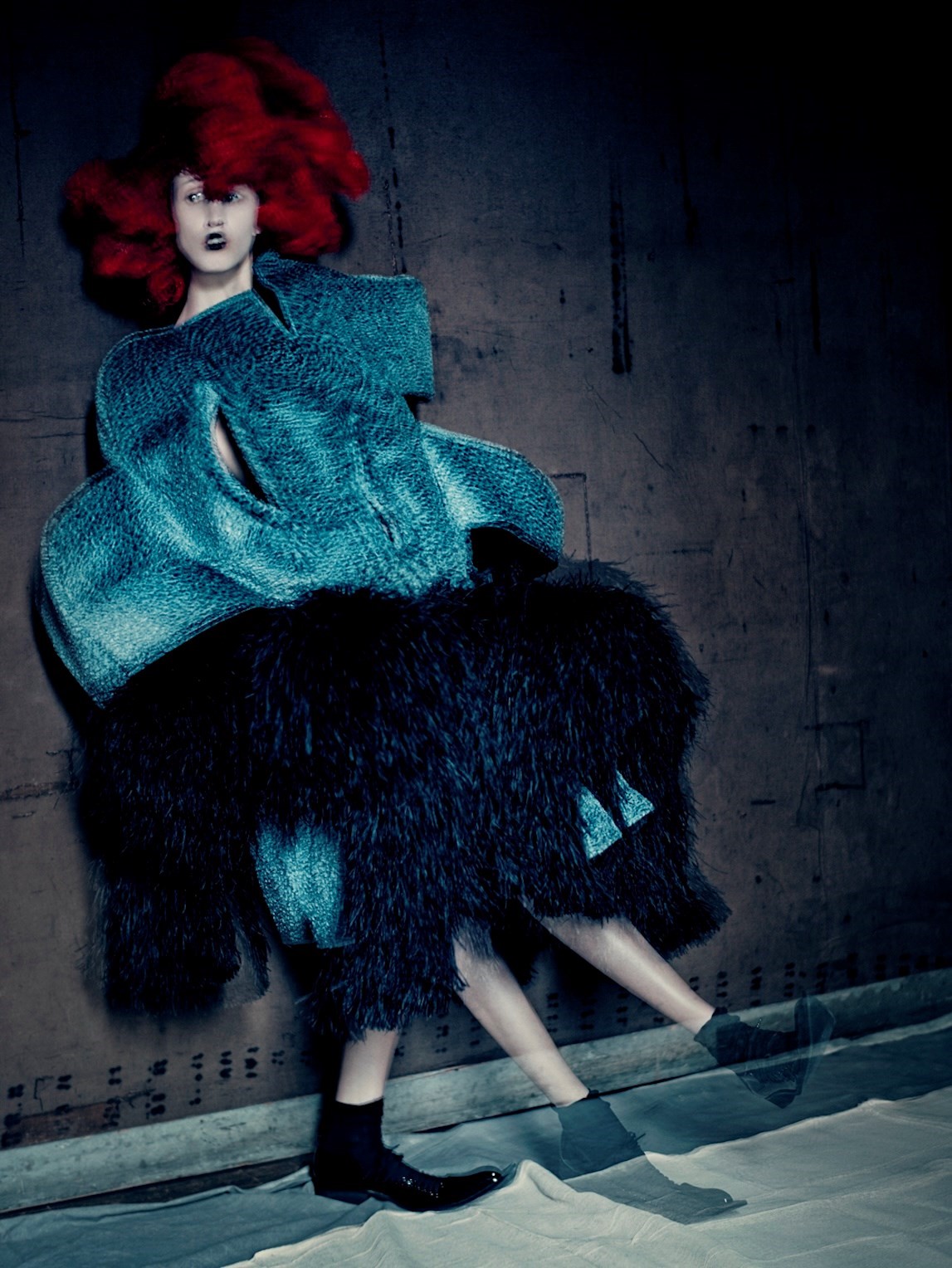
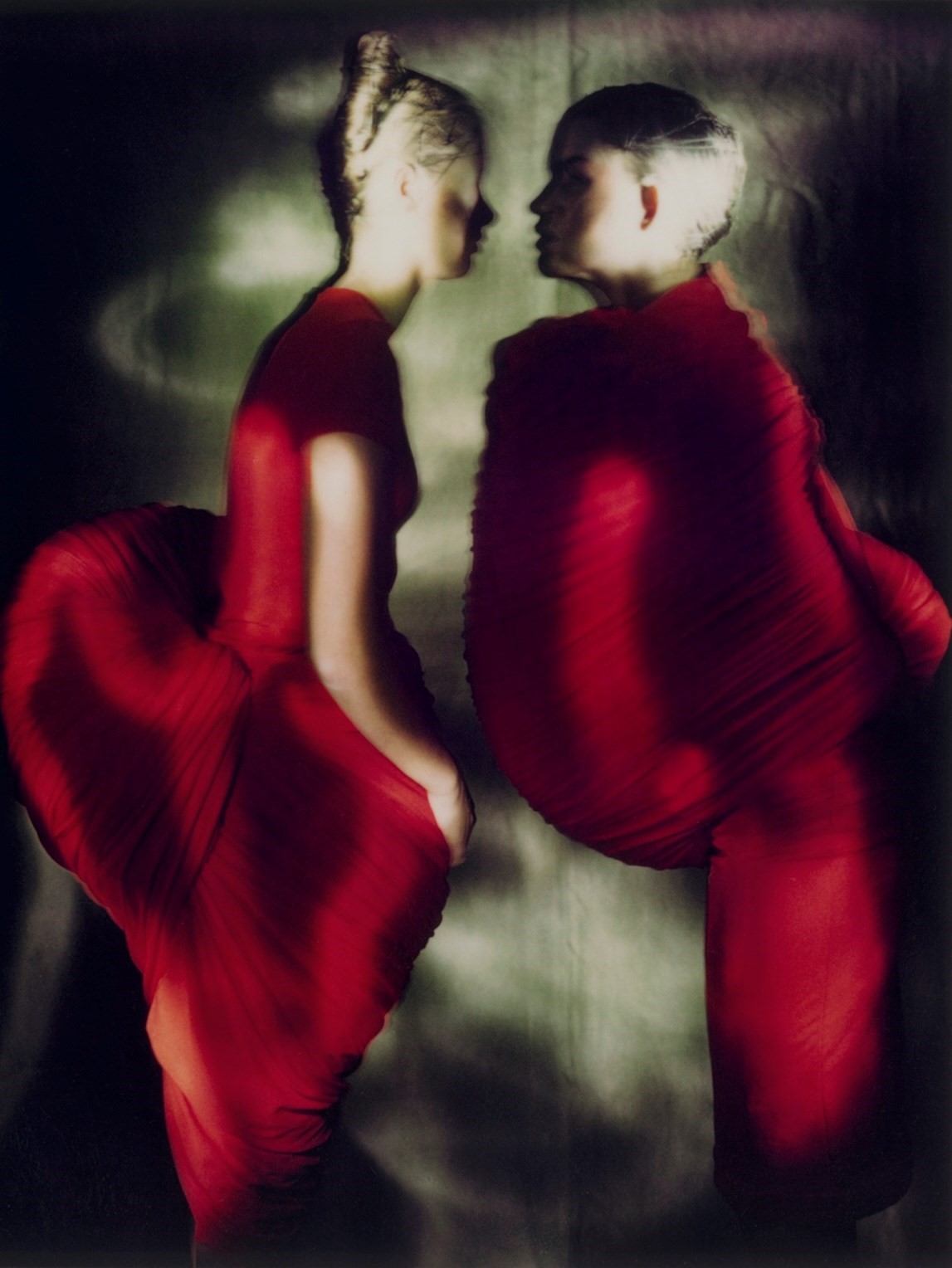
AJ: Carla, you’ve also been essential to me for the buying. For finding the brands. It’s perfect.
PR: Carla has just a little bit of experience [laughs].
AJ: Just a little bit of experience! I’ve been doing it for 37 years and Carla’s been doing it for ...
CS: 55 ... more or less. I don’t even count! The buying here is a mix of designers from everywhere. I just think the world has no boundaries.
AJ: We have looked for communities in Paris. We believe a lot in community. We’re going to carry on working with the Ecole Duperré and the students there.
CS: Yes, we are going to do a lot of things with students.
AJ: Carla introduced me to the Parsons School of Fashion in Paris. We’re going to do something with them straight after this, actually.
CS: Yes, we are doing a lot of things with Parsons. They now have a huge department that’s digging into the heritage of fashion, French especially.
AJ: But there will be no borders here. Especially not between culture. It’s not ‘fashion culture’ because fashion is culture.
CS: It’s all part of the same experience.
PR: ‘No borders’ could be the title of this conversation! For me, it’s a great opportunity to have this exhibition here. I’m very happy and very proud because Rei gave me the chance to open this beautiful world with my pictures. It’s been a long and beautiful story with Rei – we started collaborating in maybe ‘82 or ’85.
I’m always very excited and stimulated by Rei’s work. I always want to do my best to see and to show the images in another way, in another light. A new way. I always want to go beyond. Her work always goes beyond, anyway, so I have to follow. And it’s not so easy to follow because every season is a revolution! Every season is pure creation. But season by season, I try my best to follow.
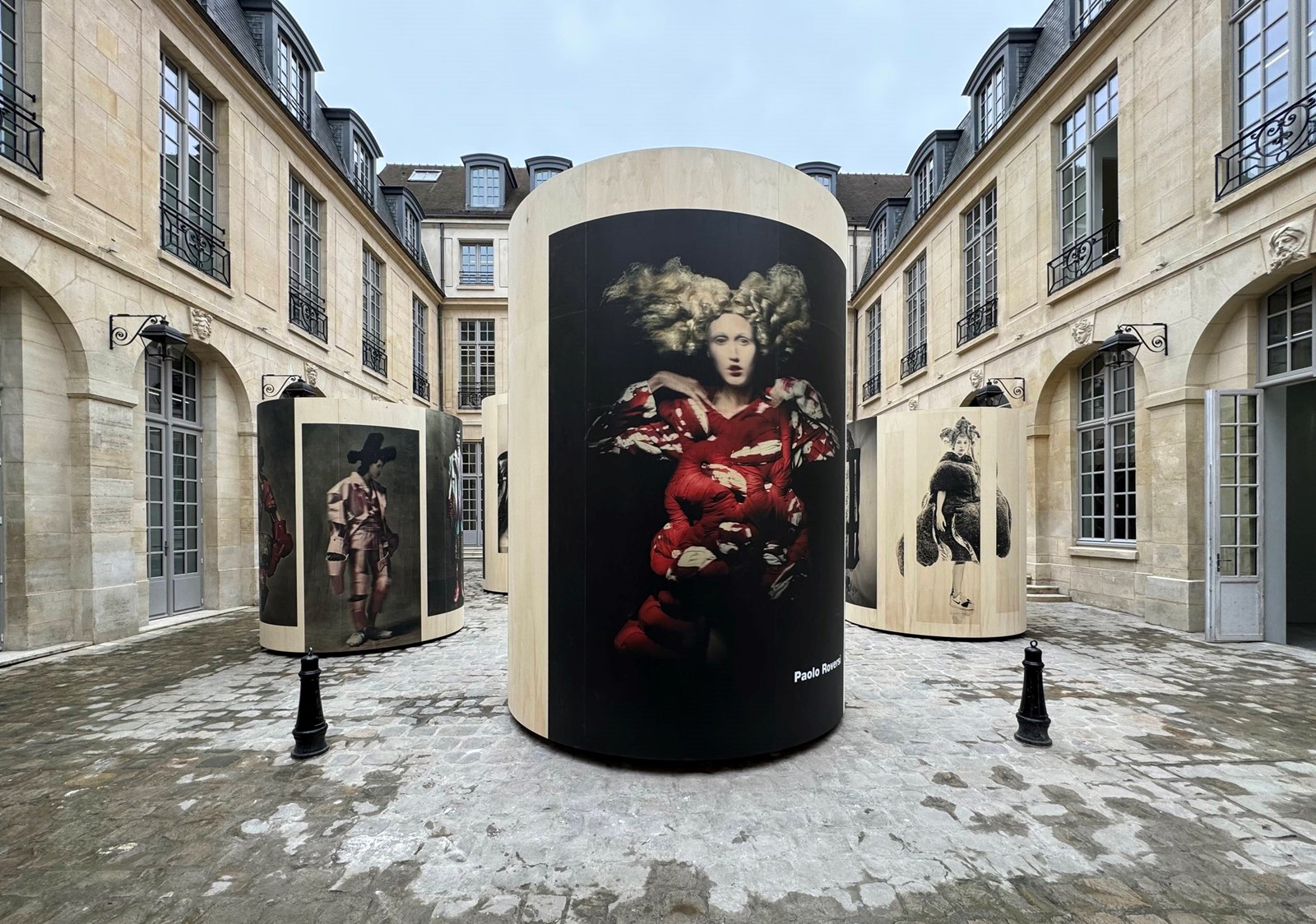
AJ: And I think we can say that you have succeeded!
CS: I feel this is like a crescendo for both you and Rei.
PR: Well for Rei, it’s a crescendo.
CS: For you, too! It’s both.
PR: Rei was always trusting me, trusting my work. And for me, this was fantastic because I felt free to do the pictures in my way. Once she told me, “I like your work because you respect the clothes,” and I was very happy with this observation. Just as she respects this building, she has always respected my work, and so I always try to respect her clothes.
AJ: Paolo, you’ve just done a big exhibition at Palais Galliera a magnificent retrospection. What was the difference between working on that show and this one?
“[This exhibition is] the work of two artists. Because Rei’s work is not fashion. She is an artist expressing her art through fashion. It’s her tool. So, for Paolo, who is also an artist, I guess we can say that Rei has given him another way to dream” – Carla Sozzani
PR: In my 50 years as a photographer, as you can imagine, I’ve worked with many designers. But the one that I have the strongest relationship with is, of course, Comme. People say my best work is for Comme des Garçons. Even in the Palais Galliera exhibition, there are many Comme des Garçons pictures. My story with the brand is very beautiful, very special, very strong.
AJ: It’s been very moving for me too, putting together this exhibition. Rei was here this week and she saw it. She was really touched as well – to see so much from over so many years. So much beauty in every single photograph. So many memories.
CS: It’s the work of two artists. Because Rei’s work is not fashion. She is an artist expressing her art through fashion. It’s her tool. So, for Paolo, who is also an artist, I guess we can say that Rei has given him another way to dream.
PR: What she does goes directly to my heart.
AJ: I have one big problem – how am I ever going to do an exhibition as beautiful as this?
CS: It will be different, yes. But everything has its place. This exhibition, for younger generations, can you imagine! They can see your work, Paolo, and also the history of Rei’s work.
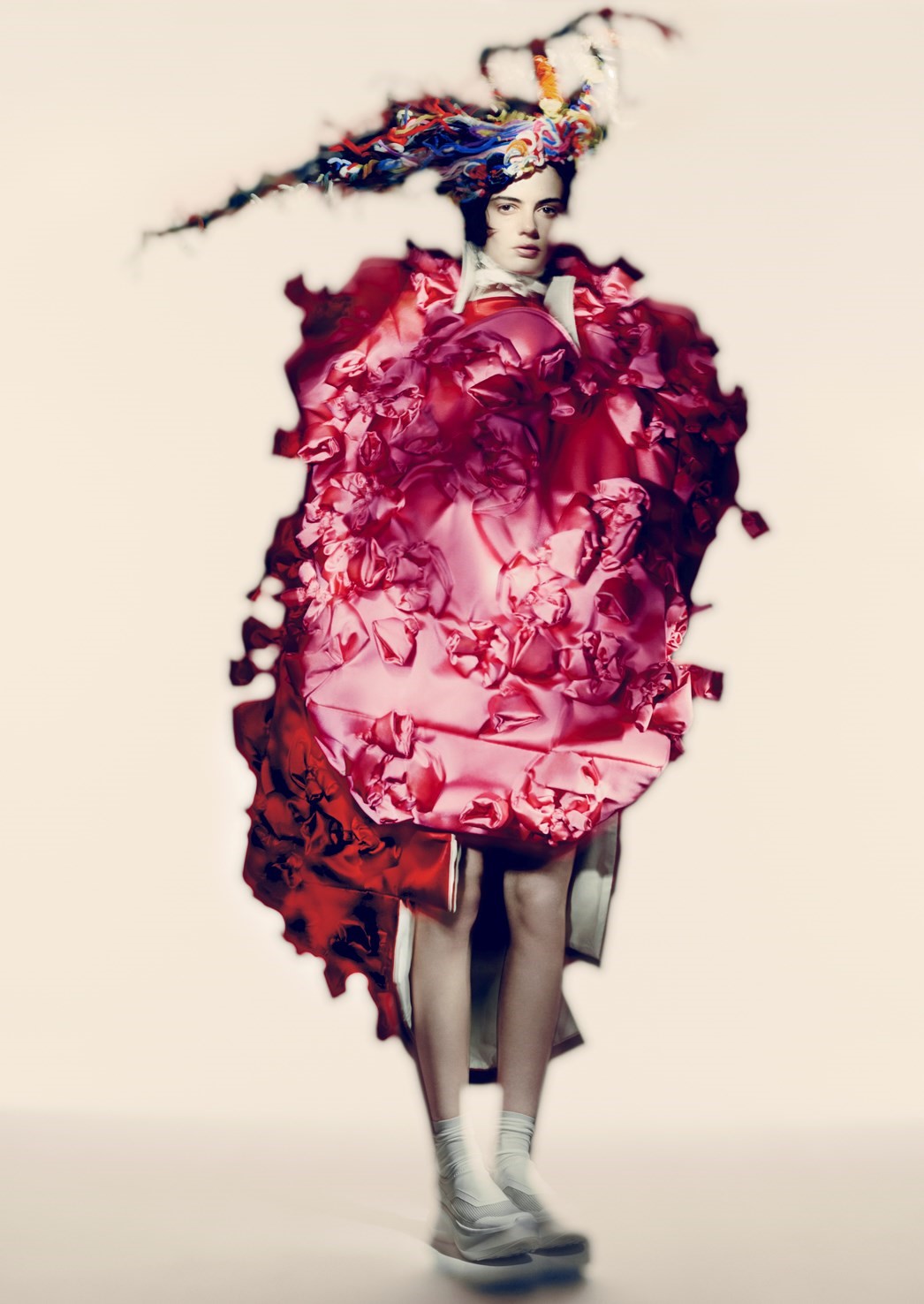

PR: Yes, for the younger generations they can look at my work and be touched. But here, they are going to be double touched as they get to see not only my work, but the work of Rei.
AJ: Double touched is nice, I like that. Paolo, it was you who chose the images for the inside and Rei who chose the images for the exterior, yes?
PR: And the shape, too. The cylinder. That was Rei’s idea.
AJ: What did you first think when you saw that design?
PR: Beautiful. Beautiful.
AJ: Have you ever put a flat photograph on a circle?
PR: No, it’s the first time that I’m exhibiting on something round, and not a flat wall.
CS: It’s unexpected. Actually, this is also going to be difficult – to design something like this again.
AJ: We can’t use this for anybody else. This is only for Paolo. Rei told me: “Don’t you dare use it for anybody else!”
PR: For me, every picture is done only for Rei. Each time I took a picture for Rei, it was for Rei.
CS: And for Vogue Italia, it was for Franca.
PR: Of course. Vogue Italia has been very, very important in my career because it was for Franca. Franca has been very important in my career as a photographer. Everything I do for Vogue Italia, it is for Franca. Franca was also ‘no borders’.
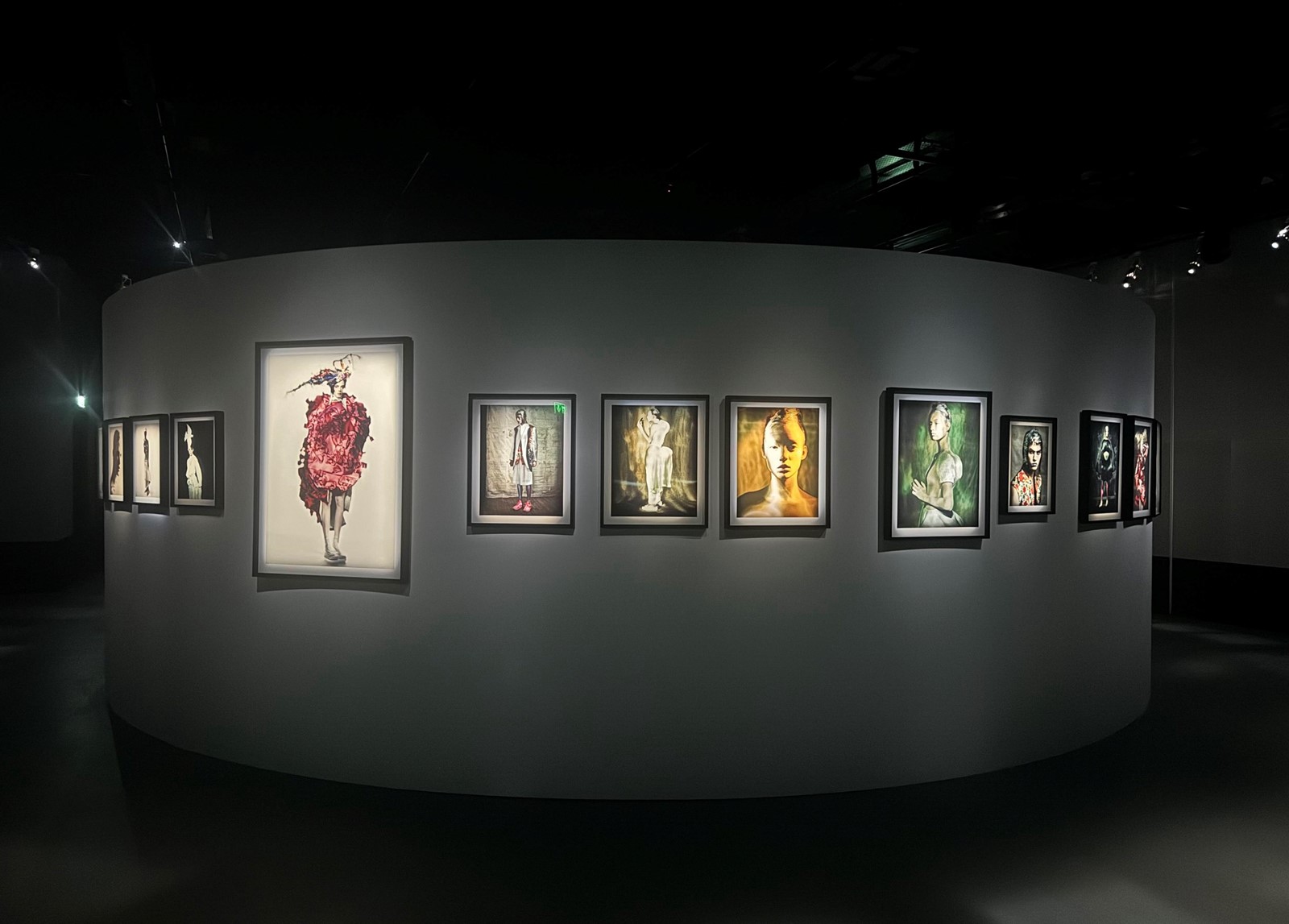
AJ: Somebody asked us, “What are my criteria to choose people to work with?” And the first one, the most important one, is that we feel an affinity or a complicity. I can’t work with people I don’t like. The complicity, the love between the people we work with – it’s the most beautiful thing.
PR: With this space, we need to go where we have never gone before. These photographs are my world with Rei, and it’s a world where I have never gone before. It’s her who pushed me to go where I’d never been before. And that’s what I love. Rei trusts me a lot.
AJ: Completely, completely. Life is contradictions, it’s paradoxes that push you.
PR: That is very important to me. Like to put the frames on a rounded wall – it’s a contradiction of normal exhibition design.
AJ: It was you, Carla, who had the idea to do an exhibition with Paolo, and I was completely OK. And then we asked Rei if she also agreed to do the first exhibition with Paolo. And she said, “Of course, but I want to design it.” And then she did it in a second!
PR: She took a piece of paper and folded it round, like that.
“For me, every picture is done only for Rei. Each time I took a picture for Rei, it was for Rei” – Paolo Roversi
CS: Straight away! That was very surprising for us.
PR: But she’s very creative, in everything.
CS: I know. It’s always a surprise with Rei.
AJ: This kind of contradiction is good because it’s a contradiction against established values, against what people expect. If there were no like rules, there'd be no contradictions. There’s only a contradiction because people expect posters on flat walls. So, contradictions make people think.
CS: But for Rei, this kind of thinking is natural.
AJ: Exactly, exactly. Rei also designed the tables and chose the chairs for the little café Rose Bakery have created. Carla had the idea to keep these chairs here [that we are sitting on in the exhibition space] for people wanting to meditate.
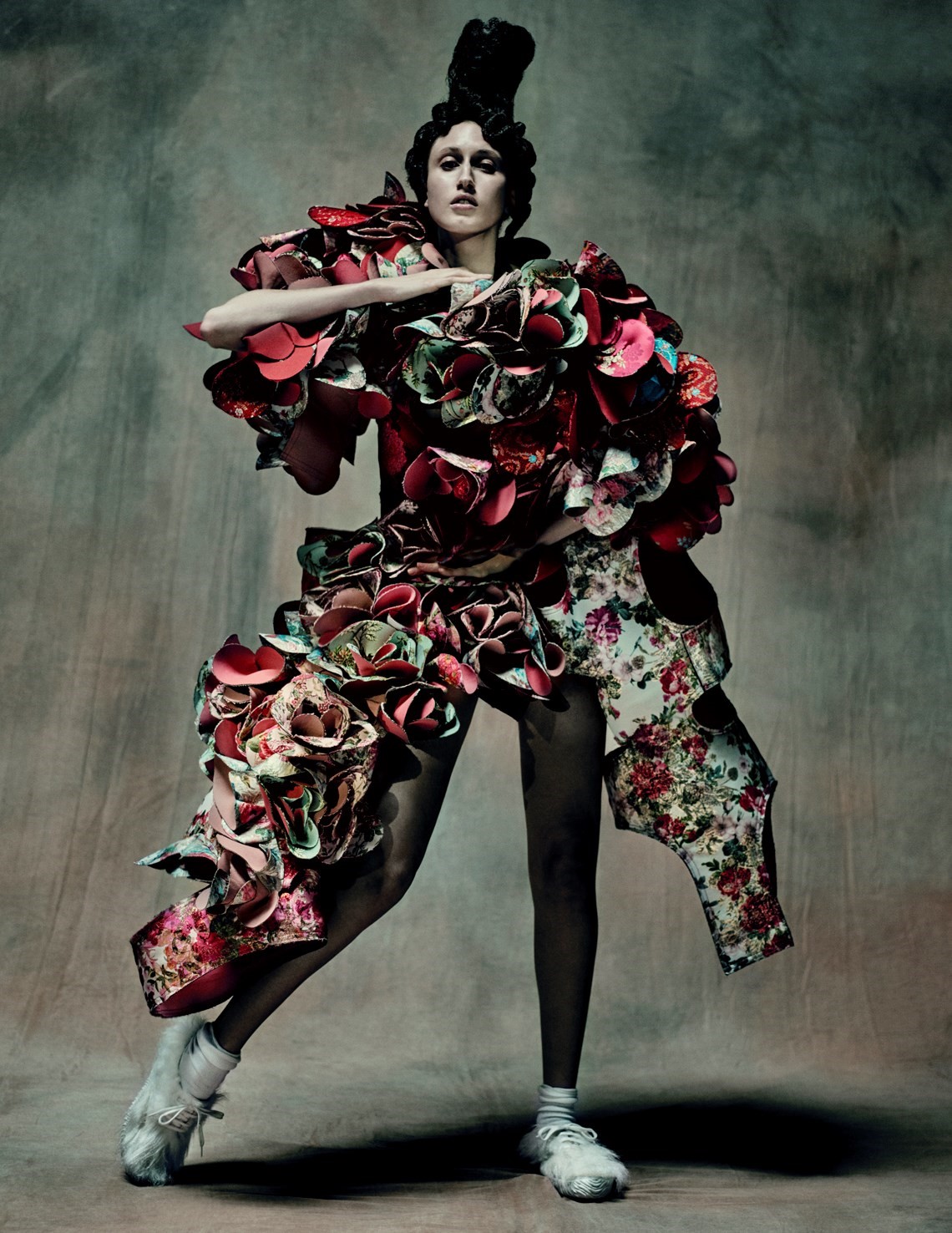
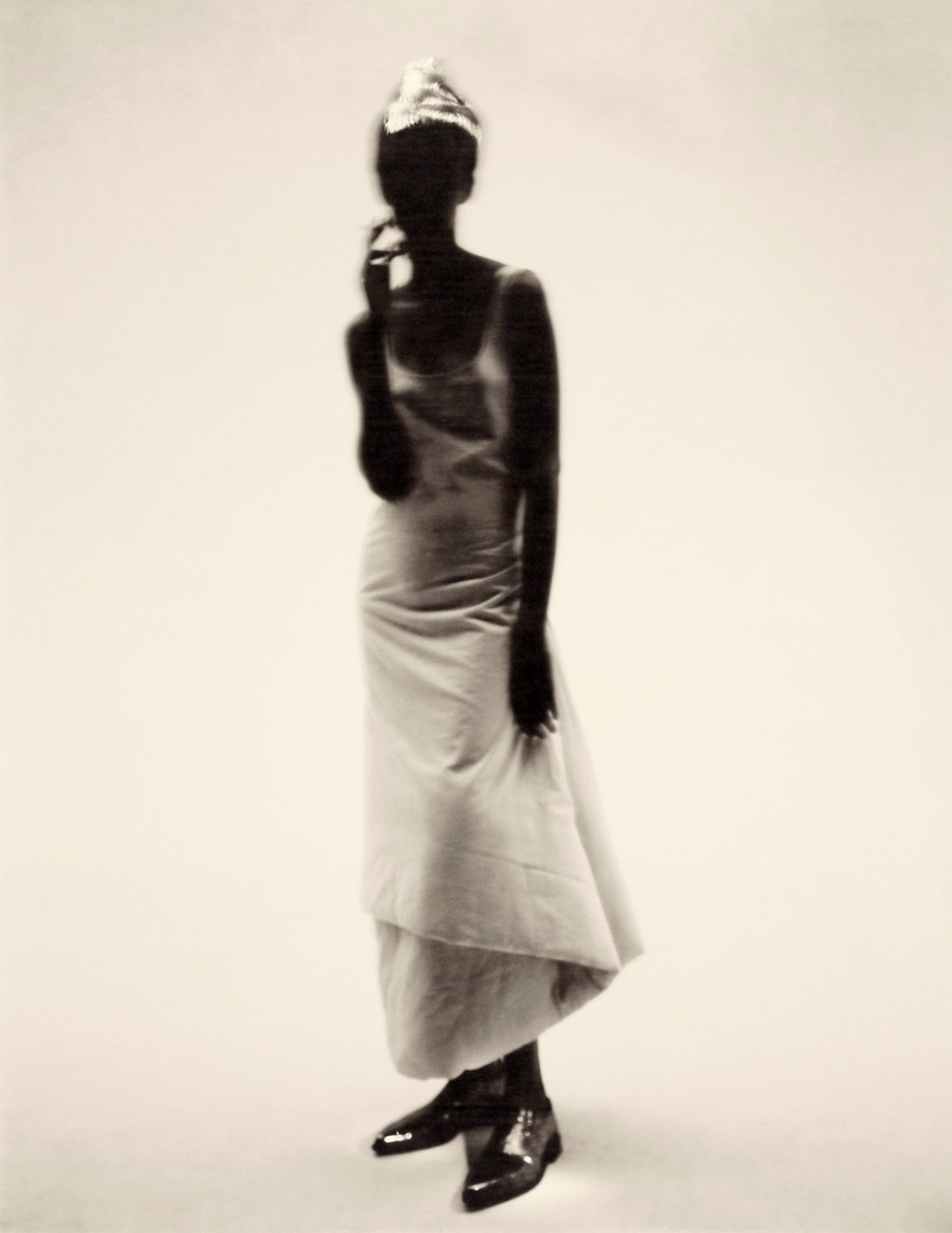
PR: To go back to this idea of ‘contradiction’ – when you work in contradiction, you always take a risk. And I think risk is very important for every artist.
AJ: Crucial.
PR: And freedom too. I remember once Rei told me, “The most important thing, Paolo, is freedom.” And I will never forget it. She was so right.
AJ: So right. Nobody achieved anything without taking risks, right?
PR: As a classic photographer, every one of these pictures [in the exhibition] is a risk for me. Because it’s lit in a strange way. I remember with one photo, we put a yellow light on the subject’s face. And then there is movement as well. I don’t risk my life, but they are photographic risks and contradictions. It’s not the typical grammar of photography. There are little mistakes, little accidents.
AJ: That’s important too. To leave chance up to accidents.
PR: She is very stimulating Rei. She pushes us.
CS: And that’s the best part.
AJ: It’s about love. If there was no love, there’d be no pushing.
CS: Like with this space. For me, when you see the place, you are pushed to discover each corner. This is super important compared to the other Dover Street Markets, which are all the most beautiful in the world, but this is going to be all designed by Rei so there is this special feeling that keeps it all together. It’s like a maze. Even today, I was trying to get out. And I think this is fantastic. In each corner, you find something different. I think it really is going to be a total experience, far beyond fashion. The emotions of it are very important.
PR: It’s a very sensual experience. A love story for ideas. A love story for dreams. It’s a love story, this space.
Dover Street Market Paris is located at 35-37 rue des Francs-Bourgeois, 75004 and will open to the public on 24 May. For the opening, there will be an installation and exhibition titled Comme des Garçons for and by Paolo Roversi. Special thanks to Julien d’Ys for the head pieces.
